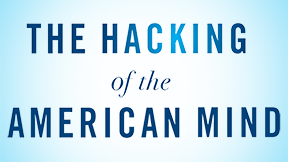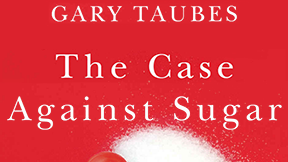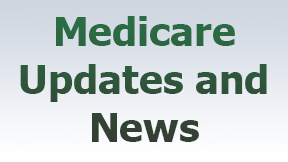 The Introduction
The Introduction
My Beginning Comments: I became familiar with Dr. Robert Lustig from his Youtube video titled, Sugar, The Bitter Truth. In the video, Lustig discussed the myriad of health problems that have resulted from the introduction in the 1970s of High Fructose Corn Syrup (HFCS) in Western diets. Among these ill-effects are an explosion of type two diabetes and obesity. An acquaintance referred me to his newest book, The Hacking of the American Mind. For future reference I’ll shorten the title to Hacking.
I looked at Lustig’s Youtube video titled The Hacking of the American Mind with Dr. Robert Lustig and decided that Hacking has merit for anyone wanting to better understand how we got to where we are as far as the American diet goes. Lustig poses an interesting question, “Have our minds been hacked by corporate and governmental interests?” He suggests that they have.
Lustig deals with philosophical, political, economic, and theological elements as he discusses one of the central themes of his book. This is the conflating, or mixing up of the concepts of pleasure and happiness.
In college I was never thrilled when I had to deal with abstract subjects; it just wasn’t my cup of tea. So, here I go; I’m dealing with more abstract topics. I feel like I’m struggling with my college classes all over again.
I’m totally sympathetic with those of you who aren’t too thrilled about having to deal with abstract topics and concepts. With that in mind, I promise that I will do my best to explain Lustig’s concepts in a simple and understandable way.
Lustig uses an English word that was new to me, and that is conflate or conflating. Merriam-Webster defines “conflate” as to bring together, fuse. A second definition is to confuse. Google defines conflate as follows: combine (two or more texts, ideas, etc.) into one. Specifically, Lustig demonstrates how corporations have conflated the concepts of pleasure and happiness for their profitable gain.
If you would like to delve into more detail than I can realistically present in these reviews and digests, I encourage you to acquire your own copy of The Hacking of the American Mind: The Science Behind the Corporate Takeover of Our Bodies and Brains.
Lustig’s Introduction
Lustig begins by explaining that childhood is a time when the balloon of happiness soars high above the mundane. He says that he became a pediatrician in part, to relive and help channel the wonder and delight involved in growth.
He sadly explains that four decades later something has happened as he now sees children taking adult prescriptions such as metformin for type 2 diabetes and benazepril for hypertension. Lustig says that the balloon of happiness has been deflated and now children have the pleasures of Capri Sun, Netflix, and Snapchat.
Lustig poses these questions: What if those pleasures, ostensibly developed and marketed in the name of increasing your happiness, actually did the opposite? What if they actually made you unhappy? What if they changed your brain so that happiness was sapped from you? What if today’s kids are actually canaries in the coal mine?
He spends some time discussing the ancient philosophical differences between pleasure and happiness. As Lustig reflects back over a four-decade time span, he makes this telling comment:
These past forty years have witnessed the twin epidemic of the negative extremes of both of these emotions: addiction (from too much pleasure) and depression (from not enough happiness).
He asks more rhetorical questions:
Did this uptick in addiction and depression occur naturally? Separately? In a vacuum? Or under what form of outside pressure? What if all of Western society has been hacked, to profit a few at the expense of the many? And what if you didn’t even know you’d been hacked?
Lustig then proceeds to define what he means by “hack.” Initially “hack” meant a prank. Then Silicon Valley types stole the word to denote clever solutions to difficult problems. That was “white hat” hacking. “Black hat” hacking is breaking into computers and infecting them with viruses and stealing data.
Lustig emphatically points out that he is not a conspiracy theorist by saying I’m not going to stick my neck so far out as to say that there has been a conspiracy between different industries and the government to purposely inflict malice on the public. However, he states that there has been a plot by some industries to obfuscate the link between their products and disease, and to willfully confuse the concepts of pleasure and happiness with the sole motive being profit.
My comments: All one has to do is to look at the food and beverage industry’s peddling high profit snacks and beverages that promote type 2 diabetes, obesity, and hypertension.
Continuing: Lustig refers to “sugar” as the other white powder [the first being cocaine]. He references his earlier book, Fat Chance where he posed these two rhetorical questions. Why are we all so fat and sick? And in just thirty years? He points out that there is a wealth of information on the role of nutrition on outcomes related to behavioral health. He says that this information is virtually unknown to most doctors and patients. He continues by saying that industries and governments have pushed their reward-generating substances onto their unsuspecting populations which has caused further unhappiness. Lustig concludes this section by stating that some of the basic tenets [beliefs] of modern medicine are rubbish.
Lustig next defines pleasure and happiness and how they are different.
Pleasure: Enjoyment or satisfaction derived from what is to one’s liking; gratification. While pleasure has a multitude of synonyms, it has a specific, well understood “reward pathway” in our brain.
Happiness: The quality of being happy or contentment. I’ll skip over the philosophy of Aristotle that he cites to further explain happiness. Contentment says that I’m satisfied; it’s not necessary to seek more.
My comments: To help myself better understand the difference between the emotions of pleasure and happiness, I have recounted these memories. I knew a young woman who was somewhat overweight. One evening she binged on chocolates and had immense pleasure as she was scarfing them down. The next day she was bummed and depressed about what she had done. What gave her fleeting pleasures devolved into unhappiness and depression. I, too, well understand this as sadly, in my previous life of being a sugar addict, I have experienced the same emotions.
Fast forward to today. When offered addictive sweets and treats, I do everything possible to politely pass on the offerings. I willfully forgo indulging in the goodies as I derive much more happiness that I have mastery over a temporary pleasure. I cannot agree enough with Lustig when he states that too much pleasure leads to addiction, and not enough happiness leads to depression. It’s so true!
Continuing: Lustig states that scientists know that pleasure (reward) is the emotional state where your brain says, this feels good—I want more. Contentment says I’m okay, I don’t need any more.
My Comments: Here is what is swirling in my mind as I sit here and press keys on my keyboard. If I’m contented with my station in life, my house, my car, my clothes, and my wholesome food diet, I don’t feel the need to be out there spending money to buy stuff to make me happy.
Continuing: Lustig uses pages 9-10 to further discuss the connection between reward and pleasure. He points out that pleasure and happiness are not mutually exclusive [meaning they can both exist at the same time]. The example he cites is having dinner at a fine restaurant where it’s a shared experience with family and friends. You can simultaneously have the pleasure of eating fine food and happiness derived from your social gathering.
He continues with this revealing comment about reward:
Reward when unchecked can lead us into misery, like addiction. Too much substance use (food, drugs, nicotine, alcohol) or compulsive behavior (gambling, shopping, surfing the internet, sex) will overload the reward pathway, and lead not to just depression, destitution and disease, but not uncommonly death as well.
He points out that pleasure is usually driven by taking something such as taking a drug (legal or illegal), taking in sugary foods, and going to casinos to get the thrill of rolling the dice and winning the big one.
Happiness or contentment is derived from giving. This can include spending time with your grandchild or giving to a charity.
Lustig’s final point about reward is this:
Reward is driven by dopamine and contentment by serotonin. Each is a neurotransmitter—a biochemical manufactured in the brain that derives feelings and emotions—but the two couldn’t be more different. Although dopamine and serotonin drive separate brain processes, it is where they overlap and how they influence each other that generates the action in this story.
This concludes his discussion of reward. He continues with a caution saying that the science about dopamine and serotonin is largely based on animal studies. He says that human studies are correlational at best. Correlational means that two things are related, but that doesn’t mean that one thing proves another. He offers more details on page 12 concerning some of the problems with human studies.
Lustig concludes his introduction by briefly outlining what he will cover in each part of his book.
Part 1: He discusses the differences between reward and contentment.
Part 2: He will elaborate on the biology of reward and science of dopamine.
Part 3: He discusses the biology of contentment and the science of serotonin. Anyone taking an anti-depressant may find this chapter to be very informative.
Part 4: Lustig will show how the perpetration of this “plot” [the conflating of pleasure and happiness for profit] has brought us to this place from a personal, cultural, and economic standpoint. He makes this sobering statement:
In the last half century, America and most of the Western world have become more and more unhappy, sicker, and broke as well.
Part 5: He will offer solutions as to how you can defend yourself against the “peddlers of pleasure.”
To be Continued
 transcribed by Liz Reedy
transcribed by Liz Reedy by Ron Iverson, President of the National Association of Medicare Supplement and Medicare Advantage Producers. Inc. and Lance D. Reedy
by Ron Iverson, President of the National Association of Medicare Supplement and Medicare Advantage Producers. Inc. and Lance D. Reedy By Lance D. Reedy
By Lance D. Reedy